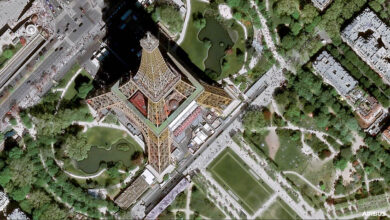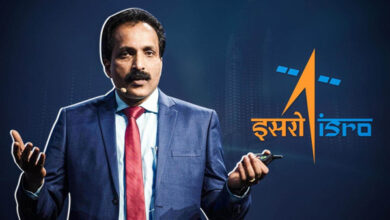Gaganyaan test flight: TV-D1 mission success after initial glitch
- ISRO’s Gaganyaan mission test flight: The TV-D1 mission is a crucial test of the Gaganyaan crew module’s Crew Escape System.
- Gaganyaan is part of India’s larger ambition to send its own space station to orbit and to eventually send an astronaut to the Moon.
- ISRO’s Gaganyaan test capsule launches on a single L40 booster, derived from the strap-on boosters used on the GSLV Mk. 2 rocket, to an altitude of around 11 – 17 kilometers before a test abort is called.
By R. Anil Kumar
Bangalore, October 21. The Indian Space Research Organisation (ISRO) successfully completed the first in a series of test flights for a mission that will put India on the small and exclusive list of countries that can launch a crewed spacecraft by itself — Gaganyaan.

The automatic launch sequence began at 8.30 AM IST, but the mission’s ground computers halted the sequence after observing an anomaly, according to ISRO chief S Somanath. Since then, the issue has been identified, and the mission launched at 10 AM IST on October 21.
The Crew Escape System successfully separated the Crew Module from the launch vehicle. After descending using parachutes, it splashed down successfully in the Bay of Bengal.
Gaganyaan is part of India’s larger ambition to send its own space station to orbit and to eventually send an astronaut to the Moon.

ISRO’s Gaganyaan test capsule launches on a single L40 booster, derived from the strap-on boosters used on the GSLV Mk. 2 rocket, to an altitude of around 11 – 17 kilometers before a test abort is called. Mission success after initial glitch
With the splashdown of the Crew Module in the Bay of Bengal, ISRO has declared the Gaganyaan TV-D1 mission a success after its initial glitch.
Splashdown successful
After separating from the launch vehicle and descending using parachutes, the Crew Module has successfully splashed down off the coast of Sriharikota.
Lift-off complete and crew escape system separates
The Gaganyaan TV-D1 mission has lifted off successfully, and the crew escape system has separated the crew module from the launch vehicle. The crew module is descending using parachutes now.
Issue identified, launch rescheduled
ISRO said in a post on the platform X that it identified the issue that caused the launch sequence to be halted and corrected it.
“The liftoff attempt could not happen. It was initially scheduled at 8 AM. It was postponed to 8.45 AM due to the weather situation. We had a very smooth automatic launch sequence leading up to the command to liftoff. But engine liftoff did not happen. We had to find out what went wrong. The ground checkout computer withheld the launch after observing an anomaly,” said ISRO chief S Somanath after the launch was aborted.
India’s massive spaceflight ambitions
If the actual Gaganyaan mission succeeds, India will join a short and exclusive list of countries that have launched a crewed spacecraft by itself. Current members include the United States, Russia (and Soviet Union) and China.
But that only seems to be the beginning of ISRO’s spaceflight ambitions.
Prime Minister Narendra Modi earlier this week chaired a high-level meeting with the space agency where he gave it two targets—put an Indian space station in orbit by 2035 and take an Indian astronaut to the Moon in 2040.
Gaganyaan will be the precursor to all of that by proving that ISRO can indeed send a crewed mission to space.
Why the crew escape system matters
The Russian Soyuz MS-10 mission to the International Space Station launched on October 11, 2018, carrying Roscosmos cosmonaut Aleksey Ovchinin and NASA astronaut Nick Hague. A few minutes after take-off, mission control declared that a booster had failed. This was the first Russian booster accident in 35 years, but the crew was able to escape because of the “launch escape system” that pulled the crew capsule away from the launch vehicle.
ISRO is prioritising the safety of its crew for the Gaganyaan project. In fact, it had earlier convinced the union government to change the 2022 guideline set by Prime Minister Narendra Modi in 2018. This was to ensure that the mission was safe and successful.
What happens during the today’s test mission
The entire ISRO TV-D1 mission will last about 532 seconds, which is a little more than eight minutes. But those eight minutes promise to be eventful, with a whole lot happening. Here is what you can expect.
Crew Escape System
The Crew Escape System’s job sounds simple enough—separate the Crew Module from the launch vehicle and take the astronauts to a safe distance in case of an emergency. But this is a much more complicated process than can be deduced by hearing about it.
The system has five types of quick-acting solid motors—Crew Escape System Jettisoning Motor (CJM), High-altitude Escape Motor (HEM), Low-altitude Escape Motor (LEM), Low-altitude Pitch Motor (LPM) and High-altitude Pitch Motor (HPM) with PEDCEM formulation. These motors need to act in a precise and synchronised manner for the test to be carried out successfully.
The crew module :
The actual Gaganyaan mission will take between one and three astronauts to a 400-kilometre orbit around the Earth, where they will stay for a 3-day mission before reentering Earth and splashing down in Indian waters.
The pressurised crew module will act as a safe environment for the astronauts to stay in space, providing shelter, oxygen, water and other necessities. For the TV-D1 test, however, an early unpressurised version of the crew module will be used.
The first TV-D1 test
The TV-D1 mission is the first flight test of the crew module, but it is far from its first test. There are some of the rigorous testing procedures that the Gaganyaan mission’s Crew Module has already been put through
The flight test plan
The TV-D1 mission will last for a total of just 532 seconds from launch to splashdown. Here is the flight plan for the mission.
The navy role in recovering the crew module
After the Crew Module splashes down about ten kilometres from the Sriharikota coast, a team from the Indian Navy will lead the recovery of the TV-D1 crew module. Recovery ships, which are positioned at a safe range in sea waters, will approach the Crew Module. Then, a team of divers will attach a buoy and hoist the Crew Module using a ship crane before bringing it to shore.
The launch vehicle
The actual Gaganyaan mission will be launched by a human-rated LVM3 rocket, which will be an upgraded version of the same launch vehicle that carried Chandrayaan-3.
The low-cost basic rocket being used for this test mission is specifically designed for testing systems. An LVM3 launch can cost between Rs 300 and 400 crore, meaning that using it for tests is impractical.
What this Gaganyaan test is for
TV-D1 stands for Test Vehicle Demonstration 1. So among the things being tested during the mission is the test vehicle itself, a single-stage rocket designed exclusively for such tests. The mission will also demonstrate a basic version of the crew module, which is the capsule where astronaut(s) will be seated during the actual Gaganyaan mission. This test will check whether the systems that are meant to separate the crew module from the rocket mid-flight in case of an emergency work.
The Gaganyaan spacecraft’s Crew Escape System is a crucial piece of technology that will safely carry the crew away in case of an emergency.





